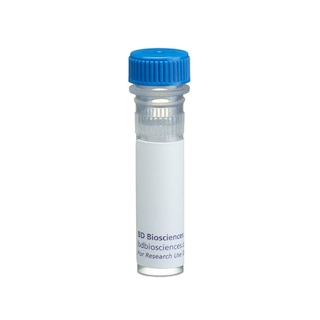-
Your selected country is
Middle East / Africa
- Change country/language
Old Browser
This page has been recently translated and is available in French now.
Looks like you're visiting us from {countryName}.
Would you like to stay on the current country site or be switched to your country?




Western blot analysis of Brevican on a rat cerebrum lysate. Lane 1: 1:1000, lane 2: 1:2000, lane 3: 1:4000 dilution of the mouse anti- Brevican antibody.


BD Transduction Laboratories™ Purified Mouse Anti-Brevican

Regulatory Status Legend
Any use of products other than the permitted use without the express written authorization of Becton, Dickinson and Company is strictly prohibited.
Preparation And Storage
Recommended Assay Procedures
Western blot: Please refer to http://www.bdbiosciences.com/pharmingen/protocols/Western_Blotting.shtml
Product Notices
- Since applications vary, each investigator should titrate the reagent to obtain optimal results.
- Please refer to www.bdbiosciences.com/us/s/resources for technical protocols.
- Source of all serum proteins is from USDA inspected abattoirs located in the United States.
- Caution: Sodium azide yields highly toxic hydrazoic acid under acidic conditions. Dilute azide compounds in running water before discarding to avoid accumulation of potentially explosive deposits in plumbing.
Neural tissue expresses a variety of cell surface heparan sulfate and extracellular chondroitin sulfate containing proteoglycans. Brevican, a chondroitin sulfate proteoglycan, is a member of the lectican family. Other members of this family are aggrecan, versican, and neurocan. These proteins are either heparan sulfate or keratan sulfate containing glycosylphosphatidylinositol (GPI) anchored or membrane spanning proteoglycans, or soluble chondroitin sulfate containing proteoglycans. Brevican exists as either a soluble or GPI-anchored plasma membrane protein. Brevican contains the shortest core protein of any of the family members. In addition, it is characterized by chondroitin sulfate chains, an N-terminal hyaluronic acid-binding domain (HA), an epidermal growth factor-like (EGF) repeat, and lectin-like and complement regulatory protein-like domains in its C-terminal region. Primary cerebellar astrocytes are the major site for mRNA expression and little, if any, is found in neurons. Although there is an 80 kDa N-terminal truncated form, full length brevican can be up to 145 kDa. Brevican is thought to play a role in the terminal differentiation and regulation of the adult nervous system.
This antibody is routinely tested by western blot analysis. Other applications were tested at BD Biosciences Pharmingen during antibody development only or reported in the literature.
Development References (3)
-
Aspberg A, Miura R, Bourdoulous S. The C-type lectin domains of lecticans, a family of aggregating chondroitin sulfate proteoglycans, bind tenascin-R by protein-protein interactions independent of carbohydrate moiety.. Proc Natl Acad Sci U S A. 1997; 94:10116-10121. (Biology). View Reference
-
Seidenbecher CI, Richter K, Rauch U, Fassler R, Garner CC, Gundelfinger ED. Brevican, a chondroitin sulfate proteoglycan of rat brain, occurs as secreted and cell surface glycosylphosphatidylinositol-anchored isoforms.. J Biol Chem. 1995; 270:27206-27212. (Biology). View Reference
-
Yamada H, Watanabe K, Shimonaka M, Yamaguchi Y. Molecular cloning of brevican, a novel brain proteoglycan of the aggrecan/versican family.. J Biol Chem. 1994; 269:10119-10126. (Biology). View Reference
Please refer to Support Documents for Quality Certificates
Global - Refer to manufacturer's instructions for use and related User Manuals and Technical data sheets before using this products as described
Comparisons, where applicable, are made against older BD Technology, manual methods or are general performance claims. Comparisons are not made against non-BD technologies, unless otherwise noted.
For Research Use Only. Not for use in diagnostic or therapeutic procedures.
